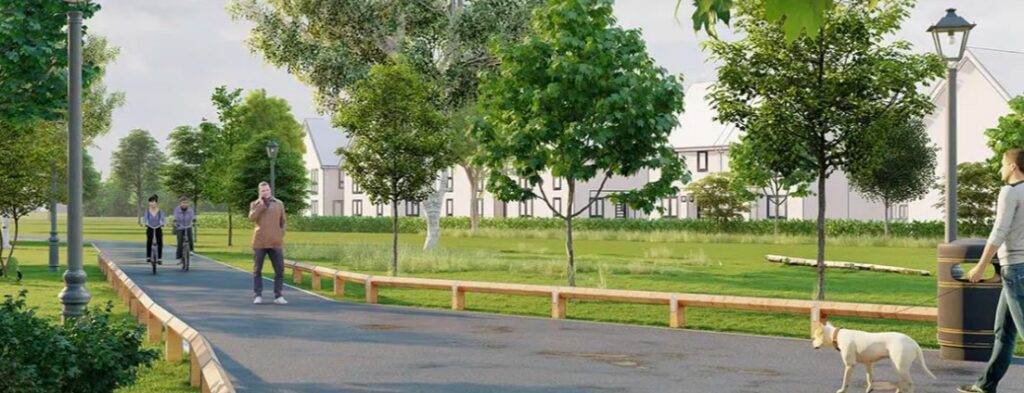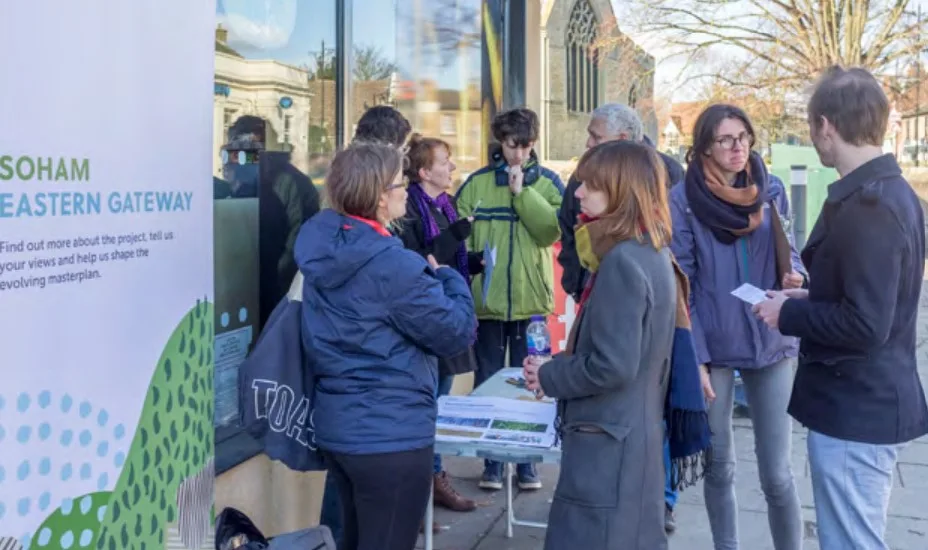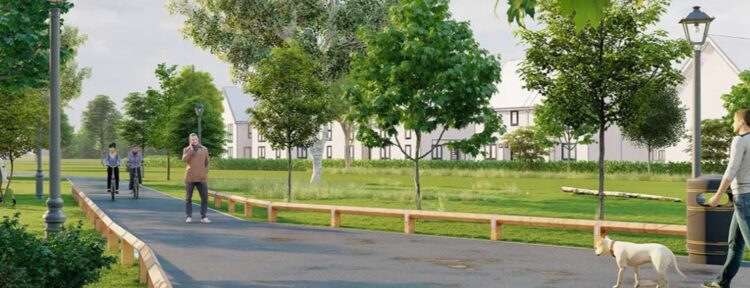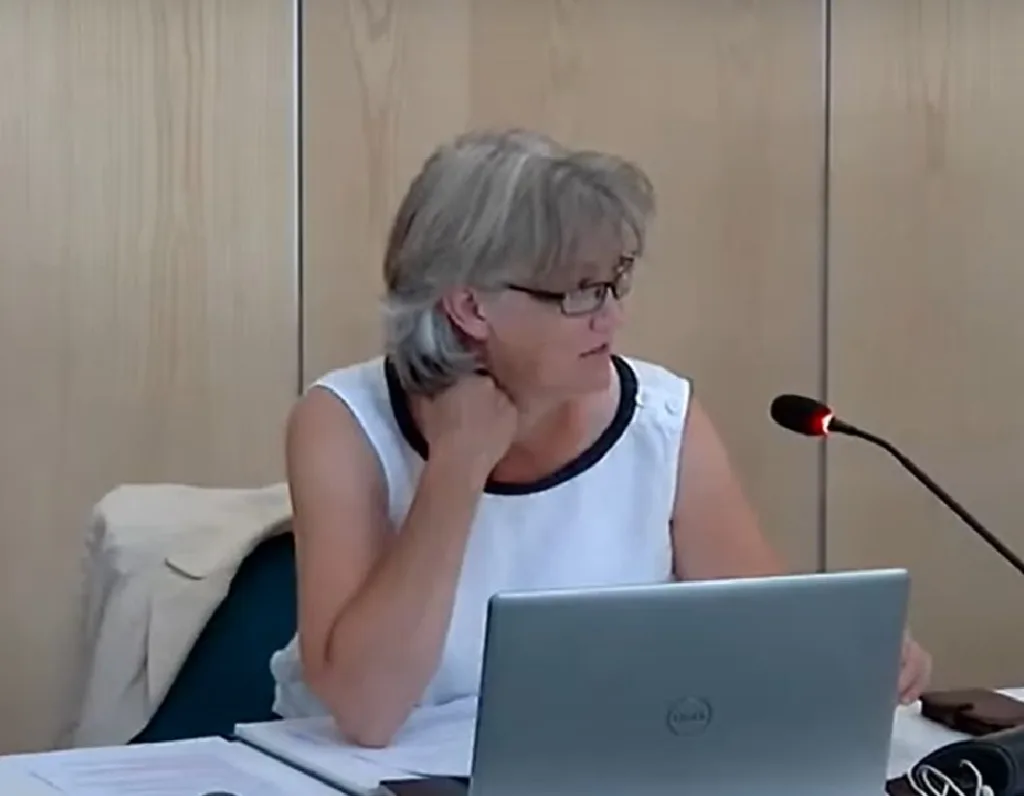East Cambridgeshire District Council is facing a legal challenge to either explain the “overwhelming appearance of bias” in its approval of 540 homes in Soham or quash the decision and “repeat the process correctly, voting in a fair and proper manner”.
The legal threat was revealed to CambsNews after we received a copy of a solicitor’s letter sent to council leader Anna Bailey, interim head of planning David Morren and chief executive John Hill.
It represents a serious and financially backed challenge over approval of the development, commonly referred to as the Soham Eastern Gateway.
In the face of nearly 300 objections, East Cambridgeshire District Council approved the application in August and brought to an end – they thought – a five year battle to build the homes.
Qua Fen Common Action Group is contesting the approval and their solicitor warned the council that “in the absence of a reply within 14 days we are instructed to apply for a judicial review”.
The solicitor questions the “propriety of the decision” taken on August 13 to approve the application by Cambridgeshire County Council owned This Land Ltd for the 540 homes west of the of the A142 Between East Fen Common and Qua Fen Common, and east of Brewhouse Lane Soham.

The legal challenge questions whether those members of the planning committee, who are also county councillors, whether they were entitled to take part in and vote since the “ultimate beneficial owner of the site” is the county council and benefits from the decision.
At the beginning of the meeting councillors Alan Sharp and Bill Hunt (planning committee chair) mentioned they were both members of the county council who owned This Land Ltd.
“Cllr Sharp confirmed that he was not part of This Land Ltd, whilst Cllr Hunt confirmed that similarly, he was not part of This Land Ltd and had not taken part in decision making at the county council in relation to This Land, and therefore would be participating,” is how the district council records it in the committee minutes.
But Qua Fen Common Action Group believe this was insufficient.
“Aside from their roles in connection with ownership of the site, councillors Hunt and Sharp are also members of the Cambridgeshire County Council’s assets and procurement committee, the body responsible for the oversight of this development,” says the legal letter.
The council is reminded of their constitution that “provides that all planning application must be handled in a manner which is free from prejudice or undue bias and where a councillor has a prejudicial interest they must not participate or vote at the meeting”.
The action group questions whether the two county councillors approached decision making with an “open mind” as required and whether a “fair minded observer knowing the background” would sense bias in the fact they took part.

“It is self-evidently a fundamental principle of responsible governance that decisions are be taken by uninterested parties in a fair and transparent manner,” says the solicitor on behalf of the action group.
“Our client is concerned that the meeting was conducted improperly, and that the decision is unsound.”
The letter claim Cllr Hunt muddied the water by “improperly” opening the floor to the Staploe Medical Centre, who were given planning consent for a new facility as part of a related planning application.
“Allowing this non-statutory party to address the meeting significantly affected the discussions relating to this planning application,” says the letter.
“This action was contrary to the East Cambridgeshire District Council’s own guidance on ‘Your Planning Service – Public Speaking at Planning Committee’.
“Despite being improperly given, the statements of the Staploe Medical Centre were referred to throughout the meeting and were material in the outcome of the vote.”

The action group solicitor also quotes legal test cases “where a ‘real possibility’ of bias was found to exist in circumstances where ‘the fair-minded and informed observer, having considered the facts, would conclude that there was a real possibility that the [the decision] was biased’.
“The above test is clearly satisfied on the facts of the case given that the decision was made in a way that is clearly contrary to both correct planning procedure and the constitutional principles of East Cambridgeshire District Council”.
The letter concludes that the action group “maintains that the decision is fundamentally unsound, likely to erode public confidence in the council and leaves itself open to legal challenge.
“As you will be aware a judicial review may be sought where there is a question about the ‘lawfulness of an enactment; or a decision, action or failure to act in relation to the exercise of a public function”.
The letter warns the council the action group is putting them “on notice that it will challenge the grant of permission issued on this decision by application for judicial review on the basis of bias and procedural irregularity.
“Our client wishes to point out that the merits or material planning considerations are not in dispute as part any such challenge, but rather that the rule of law risks being undermined if this decision were to stand without proper process.
“In other words, the issue is not with the decision which has been reached, but rather with the opaque and irregular circumstances in which it was reached.

“Our client’s objective is not to attempt to overturn this decision or question its merits, but rather to let it stand only after it has been reached in a correct and transparent manner.”
The letter concludes: “It is in the interests of both parties, the avoidance of further costs and general good governance that East Cambridgeshire District Council should now adopt correct procedure to address, at the very least, the obvious appearance of bias by revising the decision.
“In the alternative East Cambridgeshire District Council leaves itself open to lengthy delays planning delays during the judicial review and the risks and costs of a protracted legal dispute and judicial review.”























